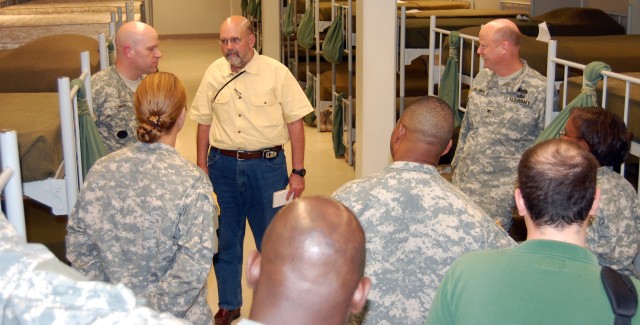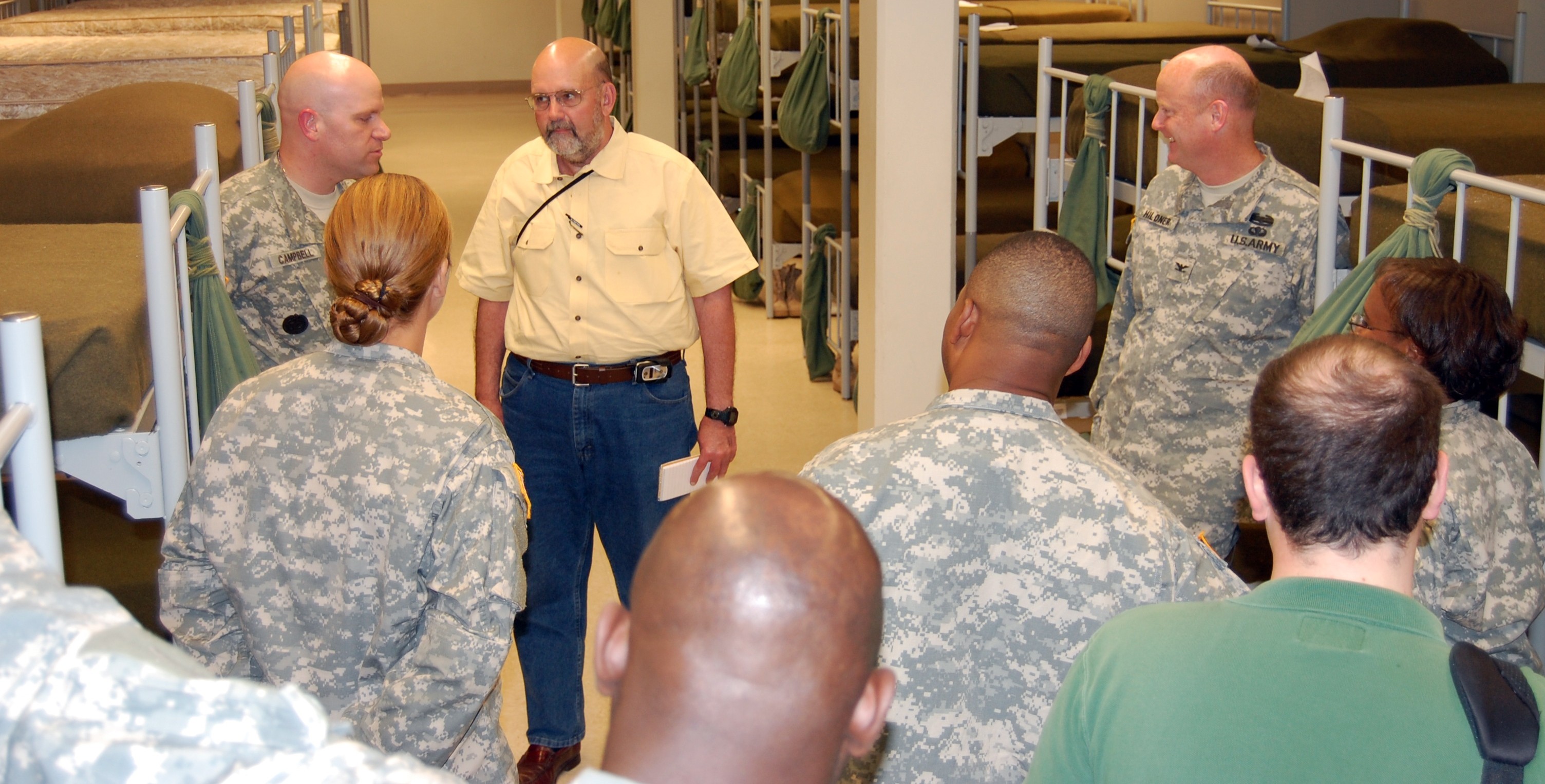In response to public scrutiny concerning barracks conditions, senior leadership in the Army directed commanders Army-wide to conduct walk-throughs to determine if the facilities meet Army standards.
Local media outlets were invited to tour Fort Lee facilities May 7, to see the conditions in which Soldiers sleep, eat, train and enjoy their free time.
The tour began with a briefing which highlighted on-going projects and future plans. The overview provided an explanation on procedures which ensure barracks are meeting Army standards and cost projections for barracks upkeep.
Col. Gwen Bingham, U.S. Army Garrison, Fort Lee commander, explained that quality of life standards are being met through continuous communication with all organizational leaders, routine inspections of all facilities and an aggressive maintenance and self-help program.
"We have an active Directorate of Public Works office that ensures all buildings meet the Army's standards through biannual preventive maintenance visits," said Bingham.
Regular maintenance and upkeep have prevented major issues from arising, said Larry Constantine, Directorate of Logistics/Directorate of Public Works director.
"Every year we set aside $700,000 to attack any problems that might arise in our (advanced individual training) barracks," Constantine said. "As a result, major issues within the barracks have been kept to a minimum."
The only major problem to occur recently was a mold issue, which was the result of an air conditioning upgrade. Once the problem was discovered, DPW developed an aggressive plan and implemented it.
"What I appreciate about the Fort Lee approach to dealing with barracks issues, is that we do a great job of addressing the causes of problems as opposed to the symptoms," said Col. Terence Hildner, 23rd Quartermaster brigade commander. "It makes a substantial difference when you spend the money up front to keep issues at bay. We are doing that here at Fort Lee and I think it is a great strategy."
The reporters were taken on a lengthy tour that included stops at the installation's oldest barracks, the Better Opportunities for Single Soldiers office, Army Community Services, a fitness facility and the installation's newest barracks rooms at the Warrior Transition Unit. At one stop along the tour, reporters were shown the facilities Soldiers were allowed to use in their free time.
"We never had this kind of stuff when I was in service," said Peter Bacque, a former Vietnam-era Soldier and reporter with the Richmond Times Dispatch.
In addition, more than $648 million will be spent over the next seven years, building and renovating barracks, dining facilities and improving quality of life facilities. The oldest barracks buildings on the installation dates back to 1951, but age was not an issue for the Soldiers living there.
"These assets had major renovations performed in 1998 which resulted in them having two Soldiers sharing a central bath and sleeping room," said Constantine.
There is only one barracks building on the installation that does not house Soldiers and is scheduled for demolition.
The last stop on the media tour was Army Community Service, where representatives received a brief from Karen McComas, ACS director.
"I take a special interest in every Soldier that comes here for help," said McComas. "We handle everything from financial counseling to ensuring Soldiers can travel back to their homes in the event of an emergency."


Social Sharing